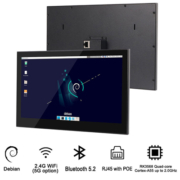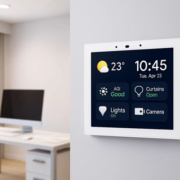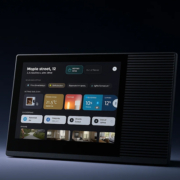Common Protocols for Smart Home Control Panels
With the rapid growth of smart home systems, control panels have become essential devices in homes, offices, and commercial spaces. They centralize control of lighting, HVAC, security, door locks, curtains, and other devices while ensuring stable communication with other smart devices and cloud platforms. Understanding the common protocols for smart home control panels is critical for users, installers, and system integrators.
1. Wireless Communication Protocols
Wireless protocols allow smart control panels to connect devices flexibly without extensive cabling.
-
Wi-Fi
- High-speed wireless communication suitable for video streaming, voice assistants, and large data transfer.
- Directly connects to cloud platforms or mobile apps for remote control.
-
Bluetooth / BLE (Low Energy)
- Used for door locks, sensors, wearables, and small devices.
- Low-power design supports short-range, fast communication.
-
Zigbee
- Low-power mesh network protocol, widely used in lighting, switches, and sensors.
- Reliable network with good scalability for whole-home coverage.
-
Z-Wave
- Similar to Zigbee, mainly used in Europe and North America.
- Supports multi-node networks and cross-brand device compatibility.
-
Thread
- IPv6-based low-power mesh protocol, an important standard for Matter ecosystem devices.
- Provides stable and secure device interconnection.
-
LoRa
- Long-range, low-power communication protocol for campuses or industrial IoT applications.
2. Wired Communication Protocols
For commercial or high-reliability applications, wired protocols ensure stable connections for smart panels.
RS485
- Serial communication standard with multi-drop support, widely used in building automation, HVAC, and security.
- Long-distance communication up to 1,200 meters, strong anti-interference capability.
RS232
- Older serial communication protocol, still used for legacy devices or debugging.
- CAN Bus
- Industrial and automotive protocol, also used in complex building systems.
KNX
- International wired protocol for building automation, widely applied in lighting, air conditioning, and shading systems.
Modbus
- Industrial protocol commonly used for sensors, controllers, and energy management.
- PoE (Power over Ethernet)
- Provides both power and data transmission in one cable, suitable for long-term operation of smart panels.
3. Smart Home Ecosystem Protocols
These protocols ensure interoperability between devices from different brands and platforms.
Matter
- Cross-platform smart home standard promoted by Google, Apple, Amazon, and the CSA.
- Provides unified device access and interoperability.
MQTT
- Lightweight IoT messaging protocol, commonly used with Home Assistant, Node-RED, and other platforms.
BACnet
- Building automation protocol suitable for large commercial projects.
OPC UA
- Industrial IoT protocol for data collection and monitoring in buildings and industrial systems.
4. Cloud and Voice Assistant Protocols
Smart panels increasingly integrate cloud services and voice assistants for a more convenient user experience.
Amazon Alexa
- Integrates with Alexa voice assistant for hands-free device control.
Google Assistant
- Works with Google Home and smart panels for remote voice operation.
Apple HomeKit
- Supports iOS ecosystem, allowing iPhone/iPad users to manage smart home devices.
Tuya / Smart Life
- Cloud-based platform protocol, suitable for small-to-medium IoT devices, enabling remote management and automation.
When choosing a smart home control panel, protocol support is a critical factor:
- For home users: Wi-Fi, Zigbee, Z-Wave, Thread, and Matter compatibility is preferred.
- For commercial or large buildings: RS485, Modbus, KNX, and BACnet provide more reliability.
- For cross-platform integration: Alexa, Google Assistant, HomeKit, and MQTT offer expanded control options.










